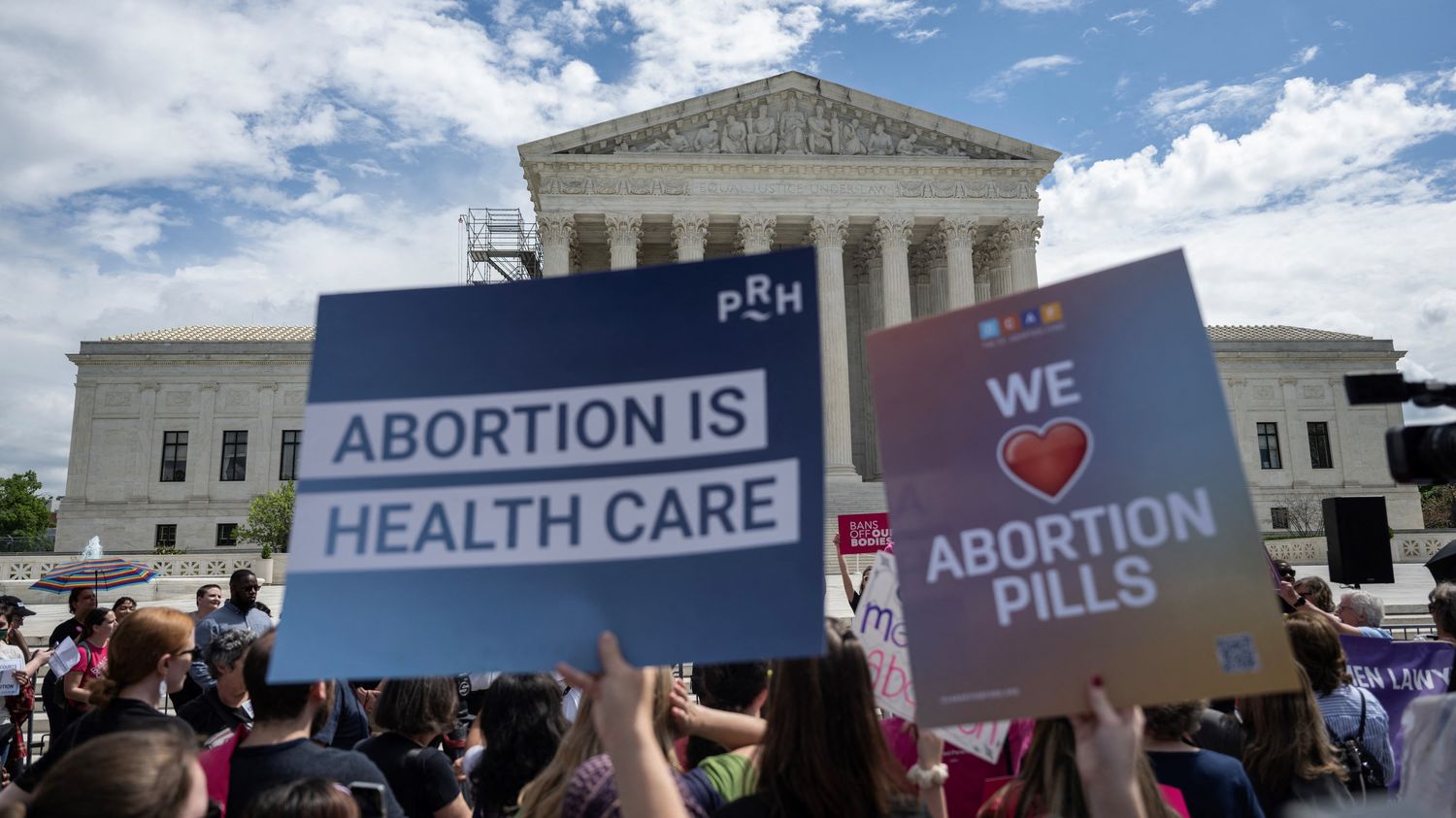The highest US court announced on Friday that access to mifepristone will remain unchanged for the time being, two weeks after a Texas federal judge’s decision to withdraw the drug’s marketing authorization.
The Supreme Court of the United States decided on Friday, April 21, to temporarily maintain access to an abortion pill, mifepristone, used for more than half of abortions in the country and taken by more than five million American women for almost twenty years. This is the first major ruling by the conservative-majority high court on the issue of abortion since the reversal of the landmark Roe v. Wade judgment, which struck down the constitutional guarantee to abortion in June 2022. Franceinfo answers four questions to decipher what this announcement means for the right to abortion across the Atlantic.
1 What did the Supreme Court decide on Friday?
Following the Supreme Court order, access to the abortion pill will remain unchanged for now. Concretely, with this decision rendered on Friday, American women will be able to receive mifepristone by post in states where abortion remains legal, and continue to be able to use it. up to ten weeks of pregnancy, instead of seven if the restrictions decided by lower courts had been validated.
This decision by the Supreme Court should not, however, have a major influence on the fate of women who wish to have an abortion in the fifteen or so states where abortion is already prohibited, since the abortion pill is no longer officially available there, even if circuitous ways to obtain it have developed.
As a reminder, the federal government had seized the high court urgently to suspend the limitations on access to this abortion pill decided by lower-level courts. With this decision, the Supreme Court notably suspends the order made in Texas by Matthew Kacsmaryk. This federal judge, with ultra-conservative positions and appointed by Donald Trump, withdrew the marketing authorization for mifepristone throughout the country on April 7 after being seized by anti-abortion activists.
Despite the scientific consensus, this magistrate considered that this drug posed risks to the health of women. Joe Biden’s federal government then seized the Supreme Court in a hurry. The latter had temporarily maintained, on April 14, access to the abortion pill, by suspending the decision of the court of appeal in order to have more time to examine the file.
After the decision of his colleague in Texas, a federal judge sitting in the State of Washington, appointed by Barack Obama, had in turn considered that mifepristone was “safe and effective” and had prohibited the Food and drug administration (FDA), the American drug agency, from withdrawing the approval allowing its availability in 17 States as well as in the capital.
A court of appeal in New Orleans, seized by the federal government, had then allowed, on April 12, that the abortion pill remains authorized, but by limiting the access facilities granted by the FDA over the years. The Supreme Court could, at its option, decide to suspend the decisions of the lower courts, maintain them, seize the case or, on the contrary, refuse to get involved.
2 Why did the US high court make this decision ?
The Supreme Court, six of whose nine justices were appointed by Republican presidents, is predominantly conservative. Of these nine judges, only two conservatives, Clarence Thomas and Samuel Alito, however expressed their disagreement on Friday with the majority decision.
The high court did not explain its reasoning, which is quite ordinary in emergency actions, specifies the Washington Post (paid article and in English).
First line of explanation: in similar cases, the Supreme Court has mostly followed the FDA in terms of drug regulation. Ihe administration of Joe Biden and pharmaceutical companies also feared that the decision of the Texas federal judge, if it had been validated by the Supreme Court, could be extended to many other drugs in the United States. “If this decision were to stand, then there would be virtually no FDA-approved prescription that would be immune to these kinds of political and ideological attacks.”Joe Biden said in a statement (in English) on April 7.
This decision of the Supreme Court could also allow the institution to strengthen its credibility with the American public, while it is increasingly challenged for its various conservative positions, notes the specialized media Politico (in English).
3 How have the defenders of the right to abortion reacted?
When the Supreme Court decision was announced, the family planning organization Planned Parenthood ruled that it was a “good news”but that “The facts remain the same: access to mifepristone should never have been threatened in the first place.” This decision “does not erase the chaos, confusion and fear that this case sought to create”, commented Elisa Wells, founder of Plan C, an information network on abortion pills. “And even though mifepristone may remain on the market for now, access to abortion is still severely and unfairly restricted in many states,” she recalled in a press release.
Joe Biden has promised to continue to fight against “political attacks on women’s health”. “The stakes couldn’t be higher for women across America”he added.
4 What are the next steps in this legal battle?
The legal battle over the abortion pill will continue in the coming weeks. The case was not, in fact, judged on the merits at second instance. A new hearing is scheduled for May 17. before the New Orleans Court of Appeals, known for its conservatism. The decision will then most likely come back to the Supreme Court.
Misoprostol, the other drug administered with mifepristone for medical abortion, can be used alone, but remains less effective and causes more side effects. A ban or a tightening of the conditions of access to mifepristone, at the end of this legal battle, could then lead to a significant redeployment of women to clinics to carry out a surgical abortion, which would cause difficulties in ensuring all abortions on time.
